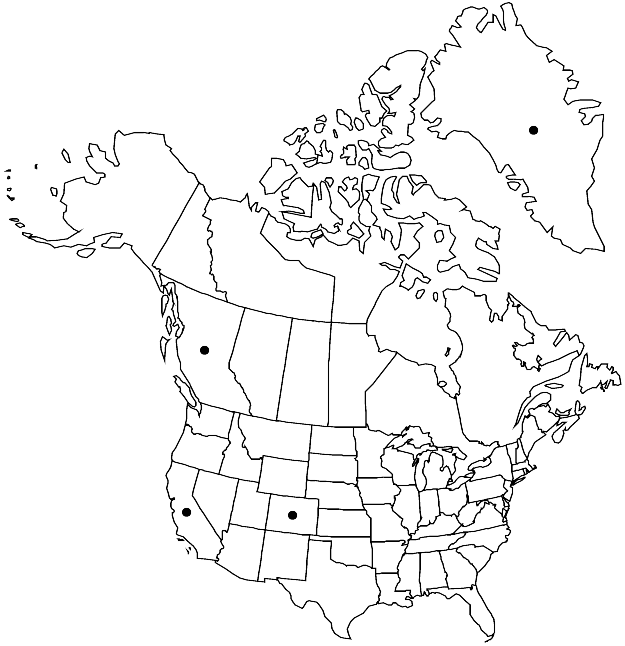Mielichhoferia mielichhoferiana
Stud. Morph. Laubm., 126. 1910.
Plants medium-sized to large, dark green, dull. Leaves erect to ± spreading or often slightly secund, 0.6–1.3 mm; distal medial laminal cells hexagonal to rhomboidal, 50–90 µm, walls moderately thick. Specialized asexual reproduction absent or rarely present as axillary bulbiform gemmae. Sexual condition dioicous. Capsule erect or inclined to 20°; peristome double; exostome present; endostome basal membrane rudimentary, adherent to exostome teeth, segments absent. Spores 15–22 µm, roughened.
Phenology: Capsules mature summer (Jun–Aug).
Habitat: Rock crevices, soil banks, roadsides
Elevation: low to high elevations
Distribution

Greenland, B.C., Calif., Colo., Eurasia
Discussion
Mielichhoferia mielichhoferiana is distinguished from M. elongata by its darker green, more elongate-lanceolate, dull leaves that are commonly somewhat secund and have smaller, narrower, hexagonal to rhomboidal laminal cells with thick walls. The two species hybridize when they grow in mixed colonies but are usually readily distinguishable. Recombinant plants that have genetic markers from both M. elongata and M. mielichhoferiana, presumably derived from hybrid sporophytes, have smaller, shorter, straighter leaves (not secund) than typical M. mielichhoferiana. The leaves tend to have the dull, dark color of M. mielichhoferiana rather than the pale whitish aspect of M. elongata. Mielichhoferia mielichhoferiana is much less common than M. elongata in North America and apparently in Europe as well. One collection from the Northwest Territories had abundant axillary bulbiform gemmae with laminate leaf primordia, but gemmae have not been observed on plants from any other site.
Selected References
None.
Lower Taxa
"narrow" is not a number.